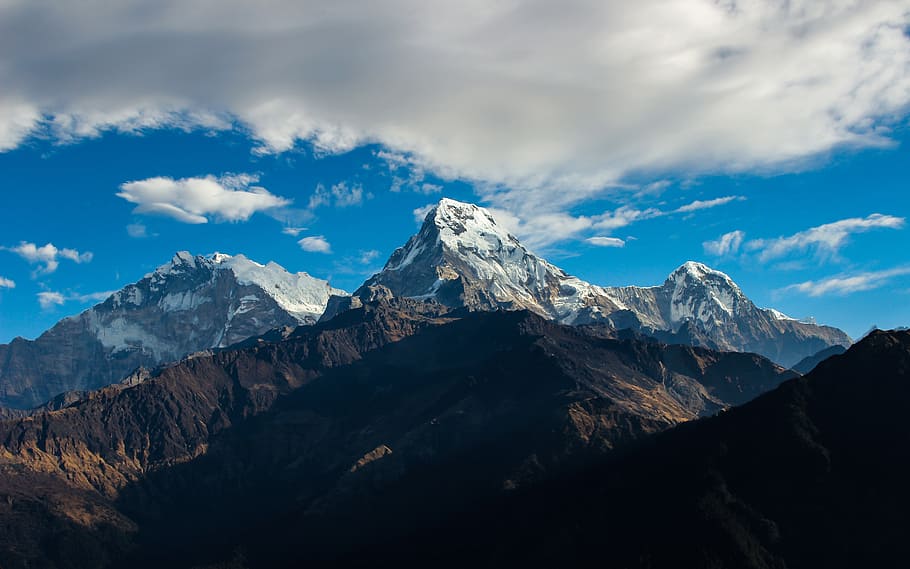Introduction
The Himalayas, renowned as the “abode of snow,” extend magnificently across five nations: Bhutan, China, India, Nepal, and Pakistan. These mountains are not merely a collection of towering peaks but a complex and diverse terrain that has intrigued explorers, pilgrims, and adventurers for centuries. At the core of this awe-inspiring range lies the concept of the Himalayan resting place. This notion represents both a literal and metaphorical sanctuary, offering tranquility, solitude, and a deep connection to nature and spirituality. This article explores the allure and significance of the Himalayan resting place, delving into its cultural, spiritual, and ecological importance.
The Himalayas: A Confluence of Nature and Culture
An Extraordinary Natural Wonder
The Himalayas, renowned for housing some of the world’s tallest peaks, including the awe-inspiring Mount Everest at 8,848 meters (29,029 feet), are a true marvel of nature. This impressive range serves as a natural barrier that significantly shapes the climate, culture, and biodiversity of the surrounding regions. From the lush valleys of Bhutan to the arid plateaus of Tibet, the Himalayas encompass a vast array of ecosystems, each supporting a rich and diverse array of life forms. This ecological variety makes the region an invaluable area for scientific study and conservation efforts.
A Diverse Cultural Mosaic
The cultural landscape of th
The concept of a “Himalayan resting place” extends far beyond a simple geographic location. It represents a haven where individuals can find peace and spiritual renewal amidst the majestic beauty of the mountains. These sanctuaries are often remote and challenging to access, symbolizing the belief that true peace and enlightenment require a journey—both physical and spiritual. The tranquility found in these places provides a profound escape from the modern world’s pressures, fostering deep introspection and a connection with nature.
Rich Historical Legacy
Historically, the Himalayas have been a destination for pilgrims seeking enlightenment. The arduous journey to these resting places often involves trekking through challenging terrains, symbolizing the inner journey of overcoming personal obstacles to achieve higher consciousness. Many of these sacred sites are associated with legends and myths, adding to their mystical allure and spiritual significance. They serve as both literal and metaphorical milestones in the quest for spiritual growth and understanding.
Contemporary Retreats
Today, the concept of the Himalayan resting place has evolved to include not only spiritual seekers but also adventurers and tourists seeking respite from modern life’s stresses. These sanctuaries offer a unique blend of serenity and adventure, attracting a diverse group of individuals who come to rejuvenate their minds and bodies in the pristine mountain environment. The modern Himalayan resting place continues to uphold its legacy as a sanctuary for those seeking peace, adventure, and a deeper connection to the natural world.
Renowned Resting Spots in the Himalayas
Lumbini, Nepal
Lumbini, the birthplace of Siddhartha Gautama, who later became known as Buddha, stands as one of the most significant spiritual resting places in the Himalayas. Located in the Terai plains of Nepal, this UNESCO World Heritage site attracts thousands of pilgrims annually. The Maya Devi Temple, which marks the exact spot where Buddha was born, offers a serene sanctuary surrounded by tranquil gardens and monasteries built by various Buddhist nations. This sacred site provides a peaceful retreat for those seeking spiritual connection and reflection.
Rishikesh, India
Rishikesh, situated on the banks of the sacred Ganges River in Uttarakhand, India, is renowned as the “Yoga Capital of the World.” This town is a prominent hub for individuals seeking spiritual growth and physical well-being through yoga and meditation. The surrounding hills and forests are home to numerous retreats and ashrams, where visitors can immerse themselves in practices that promote inner peace and mindfulness. The serene environment and the spiritual energy of Rishikesh make it an ideal Himalayan resting place for rejuvenation and self-discovery.
Paro Taktsang, Bhutan
Paro Taktsang, also known as the Tiger’s Nest Monastery, is one of Bhutan’s most iconic and sacred sites. Perched on the edge of a cliff 900 meters above the Paro Valley, it is believed to be the meditation site of Guru Rinpoche, the founder of Tibetan Buddhism, in the 8th century. The pilgrimage to this monastery involves a steep climb that rewards visitors with breathtaking views and a profound sense of serenity. Paro Taktsang embodies the essence of a Himalayan resting place, offering a unique blend of spiritual depth and natural beauty.
Dharamsala, India
Dharamsala, located in the Indian state of Himachal Pradesh, serves as the residence of the Dalai Lama and the Tibetan government-in-exile. This town is a prominent center for Tibetan Buddhism and attracts numerous spiritual seekers and tourists. Dharamsala offers a variety of meditation centers and monasteries, where one can experience the peaceful ambiance of Tibetan spirituality amidst the stunning backdrop of the Dhauladhar mountain range. It is an exemplary Himalayan resting place, providing an environment of peace, learning, and spiritual enrichment.
Journey to the Serene Himalayan Resting Places
Physical Challenges
Reaching these Himalayan resting places often requires navigating rugged terrains, crossing high mountain passes, and enduring unpredictable weather conditions. The journey itself serves as a test of endurance and resilience, mirroring the personal challenges one must overcome to achieve inner peace and enlightenment. The physical demands of these treks highlight the commitment and determination needed to reach these sacred sites, making the arrival all the more rewarding.
Spiritual and Emotional Transformation
The physical journey to the Himalayan resting places often leads to profound spiritual and emotional transformation. As travelers navigate the mountain paths, they are confronted with their own limitations and fears. The majesty and isolation of the Himalayas provide a perfect setting for introspection and self-discovery. This challenging yet inspiring environment fosters a deep sense of achievement and is often accompanied by a profound feeling of spiritual awakening and renewal upon reaching these sacred sanctuaries.
Ecological Impact
The influx of visitors to the Himalayan resting places brings significant economic benefits to local communities but also poses a threat to the fragile ecosystem. Sustainable tourism practices are essential to preserving the natural beauty and cultural heritage of these areas. Efforts are being made to balance tourism with conservation, ensuring that these sanctuaries remain pristine and unspoiled for future generations. Promoting eco-friendly practices and raising awareness about the environmental impact of tourism are crucial steps in maintaining the delicate balance between human activity and nature in the Himalayas.
The Evolution of Himalayan Resting Sites
Balancing Tourism and Conservation
As the Himalayas continue to gain popularity as a travel destination, striking a delicate balance between tourism and conservation becomes imperative. Initiatives focusing on eco-friendly accommodations, comprehensive waste management programs, and community-based tourism projects are pivotal in mitigating environmental impact and fostering sustainable development practices. By promoting responsible tourism, we can safeguard the pristine beauty and ecological diversity of Himalayan resting places for future generations.
Cultural Preservation
Preserving the rich cultural heritage of Himalayan communities is equally critical amidst the rise in tourism. Increased visitor numbers pose a risk of cultural dilution and commercialization. Supporting local traditions, craftsmanship, and indigenous languages is essential for preserving the distinct identity of these regions. By nurturing cultural authenticity, Himalayan resting places can retain their spiritual and cultural significance, offering visitors an enriching experience rooted in tradition and history.
The Role of Technology
Technological advancements are reshaping access to remote Himalayan resting places, enhancing infrastructure and communication networks to improve visitor experiences. While these innovations facilitate connectivity and convenience, it is vital to ensure they complement rather than compromise the natural and cultural integrity of these sacred sites. Responsible integration of technology can empower local communities, providing economic opportunities while preserving the pristine environment and cultural heritage that define Himalayan resting places.
Rich FAQs: Himalayan Resting Place
What defines a Himalayan resting place?
A Himalayan resting place is more than just a physical location; it embodies a sanctuary where individuals seek solace, spiritual renewal, and connection amidst the majestic Himalayan mountains.
Why are Himalayan resting places significant?
These sanctuaries hold cultural,spiritual, and ecological importance. They serve as pilgrimage sites, centers of meditation, and hubs for connecting with nature, offering visitors a profound sense of peace and enlightenment.
What are some notable Himalayan resting places? Examples include Lumbini in
Nepal, the birthplace of Buddha; Paro Taktsang (Tiger’s Nest Monastery) in Bhutan; and Rishikesh in India, renowned for yoga and meditation.
What challenges do visitors face when journeying to Himalayan resting places
Visitors must navigate rugged terrains, high mountain passes, and unpredictable weather conditions, reflecting the physical and mental resilience required to reach these sacred sites.
How can tourism be balanced with conservation at Himalayan resting places
Initiatives focus on eco-friendly accommodations, waste management, and community-based tourism to minimize environmental impact while promoting sustainable development.
How can the cultural heritage of Himalayan communities be preserved amidst tourism?
Efforts to support local traditions, crafts, and languages are crucial. These initiatives help maintain the unique identity of Himalayan regions amid growing visitor interest.
What role does technology play in enhancing access to Himalayan resting places
Technological advancements in infrastructure and communication networks improve accessibility for visitors while also supporting local communities. However, it’s essential to ensure these developments respect and preserve the natural and cultural integrity of these sacred sites.
Conclusion
In conclusion, Himalayan resting places stand as profound sanctuaries amidst the awe-inspiring beauty of the Himalayan mountains. These sites, steeped in cultural heritage and spiritual significance, offer seekers of peace and enlightenment a unique opportunity for introspection and renewal. As tourism to these sacred locations grows, it becomes increasingly important to balance visitor access with conservation efforts, ensuring the preservation of their natural splendor and cultural authenticity. By embracing sustainable practices and supporting local communities, we can safeguard these treasures for future generations to cherish and experience. Himalayan resting places remain timeless havens, where the journey inward parallels the majestic landscapes that surround them, fostering a connection that transcends the physical realm and touches the soul.
Stay tuned for more updates & news on Gossips!




